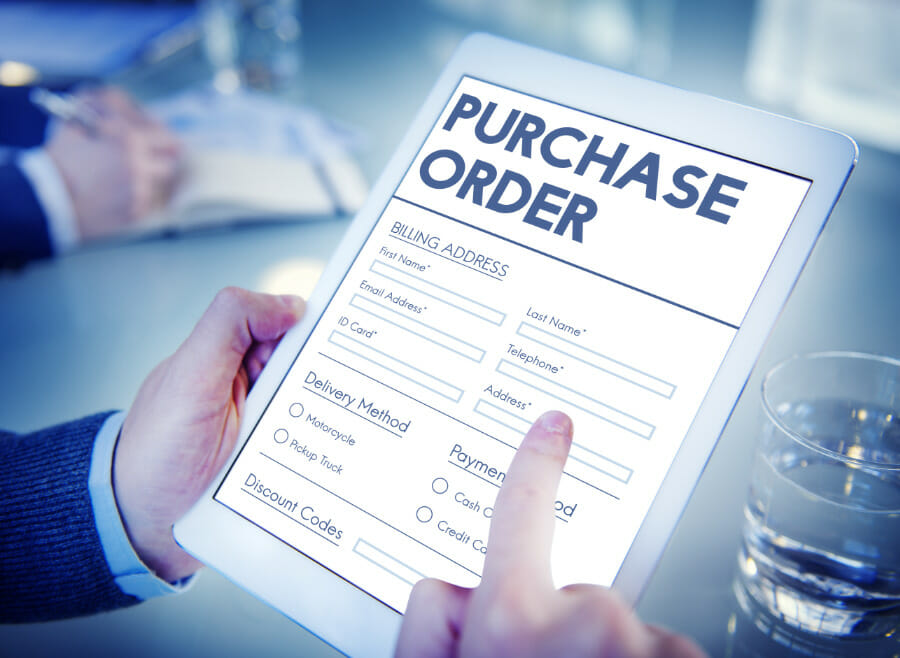There are several vital binding financial documents in the business world. Without these documents, there will be foul plays among transacting parties, and money may be lost as a result. One such document is the Purchase order often drafted by the buyer to the seller about the goods he needs to purchase.
The vendor receives the document and either rejects or accepts it depending on his/her capacity to fulfill its obligations. It means that once the document is binding, the seller is under obligation to sell his/her product to the buyer as specified in the purchase order.
What is a purchase order?
It is a commercial source document issued by the buying/purchase department of an organization whenever they place an order of things to purchase from suppliers or vendors. The document often outlines the items the business intends to purchase, such as the quantity, type of goods, and price. In a nutshell, a purchasing order is a contract drafted by the purchasing company intended for the seller.
Purchase Order Templates
How does a purchase order work?
For a business to operate, it needs to streamline its purchasing process by using a purchasing order (PO). The PO usually follows a strict step-by-step preparation procedure known as the purchasing order process. We will explain in this section what is involved within the business. To establish how a PO works, we will go through the process it takes from creation to closure of the deal. The steps taken would considerably vary depending on the nature of the company. It means that the purchase order process is subject to modification to encompass any additional steps from budget approval to contractual approval. Here is the purchase order process:
Creation of the purchase order by the buyer
When the purchasing department receives a request for things they need or other department needs and a decision is made to purchase those things, the department creates a purchase order. The PO will detail what is being requested from the supplier showing quantity, pricing, and the payment terms. It will help track the goods ordered.
Purchase Order approval
Some organizations require that before a PO is sent to the seller, it be approved by a designated person within the company. However, modern companies tend to get rid of this process by requiring that the purchasing department issues a purchase requisition first, eliminating the need for approval.
Seller rejects or accepts a purchase order
Once the PO is prepared, it is sent to the seller. This process of sending the PO to the seller might appear redundant to companies that buy online; it helps keep the internal document necessary for reconciliation purposes. The bottom of the purchase order is usually dotted, allowing the authorized manager of the selling company to sign off on order. The PO stipulates the transaction in detail of what the buyer expects from the seller. Once the seller reads through the PO, he/she has the right to accept or reject the document. If the seller accepts by telling the buyer that they can fulfill the order, the signed purchasing order becomes a binding contract for both parties. Modern technology through E-procurement can send the PO using an online procurement system, making it easier to track down the emails having POs for easy recording.
The buyer records the purchase order.
Once the order is sent to the seller and is accepted, it remains “open.” An open purchase order means that the goods have not been received or the order has been partially received. The buyer can know which order has arrived.
Invoicing
The seller will invoice for the purchase order by indicating the PO number on the invoice confirming the goods delivered. The purchasing company will then confirm the PO number and the order details by matching up the invoice, PO, and the packing slip in a process called 3-way matching.
Closure
Upon confirming that everything matches out, the purchasing company approves the invoice and arranges for payment to be made to the seller as per the terms of the agreement. When this step is complete, the PO is marked closed.
Purchase Order Vs. Invoice
These two documents legally bind financial documents that pass hands between the buyer and the seller, no wonder many people confuse them. PO and invoice are closely related since the purchase create the invoice about the goods delivered and their prices. However, each of these documents is different from the parties’ point of view, and different people use them. Here are a few differences to note.
| Purchase order | Invoice |
| Created by buyer Created before purchase Details good required Highlights proposed payment terms | Created by seller Created after purchase Confirms good delivered Demands payment on a given date |
What to include in a purchase order?
There is much software available in the market that can assist you in coming up with a purchase order. Nevertheless, you can create your PO using a word or excel document by including the following details.
- Date of issue- where you record the date the PO is written.
- Products quantity- here you record the quantity of each type of product needed
- Product details –in this section, you will include the SKU number, brand names, and model numbers.
- Price- you will indicate the price for each product per unit
- Delivery date- here is where the date the good arrived at the seller is recorded.
- PO number- the PO book progressively numbered
- Business information such as company name, shipping address and billing address, and contact information is recorded here.
- Terms of payment- Terms such as “payment upon delivery” or payment on a specific date.
How to create a purchase order?
To create a purchase order manually from Microsoft word, indicate the following:
Header– Should have the company name, purchase order date, business address, and order number
Vendor information– indicate the details of the correct recipient of the PO, such as the name of the seller and the address.
Ship to-This is the place you record where the order should be sent, the intended delivery date, and the shipping method.
Order details– Here is where each product detail and the pricing are recorded.
Summarize– At the end of a PO, you provide subtotal, applicable discounts, taxes, and total.
Why is a PO important?
A purchase order has double benefits for both buyer and seller, as shown below:
For the buyer
- It helps in tracking inventory and purchase patterns
- It aids in ordering goods in advance and specific amounts.
- It also aids you in buying on credit.
- You can choose the delivery date that suits you
For the seller
- It helps the seller track sales and recurring order
- It aids in creating an invoice to demand payment
- It acts as legal security for payment.
A purchase order is a very important financial document that your company should have. It easy to make and can act as a point of reference for your records. I believe the information above will help you get started in creating a purchase order for your business.
Looking For Document Management System?
Call Pursho @ 0731-6725516
Check PURSHO WRYTES Automatic Content Generator
https://wrytes.purshology.com/home
Telegram Group One Must Follow :
For Startups: https://t.me/daily_business_reads




